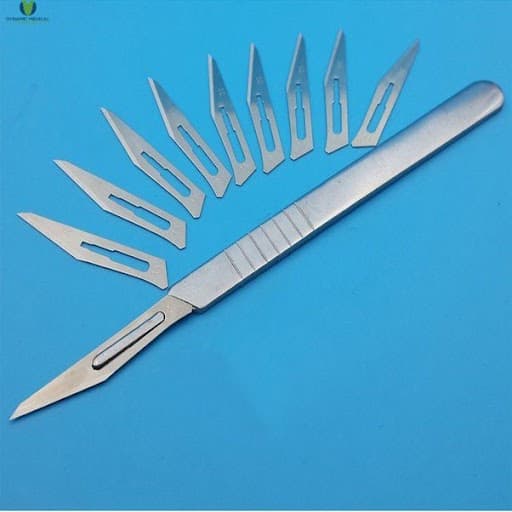
Diving into the diversity of surgical scalpels
A surgical scalpel is an indispensable tool in the field of medicine. It is designed for controlled and accurate incisions during surgical procedures.
A surgical scalpel is an indispensable tool in the field of medicine. It is designed for controlled and accurate incisions during surgical procedures. A little change in its design has taken place since its invention. And there are always some harms and injuries associated with it.
It can be defined as a dermatological tool used to make small incisions in the body's skin and tissues. Each of the incisions is 1 to 2 cm in length. In this blog, we will discuss the variety of surgical scalpel blades available on the market. They have been classified into different types based on the design of the blade associated with them. Such as,
- Movement of the blade:
- Retractable-blade scalpels: a type of scalpel blade with the ability to be retracted when not in use to avoid any kind of harm or cuts due to its blade. It also has a lock mechanism for both retracted and extended positions. Some blades are automatically retracted when pressure is released.
- Fixed-blade scalpels: These scalpels are designed with a permanent blade, which ensures stability and reliability for making incisions. There is no need to change the blade repeatedly, but regular sterilization and maintenance are a must because these blades pose a high risk of scalpel injuries.
- Design of the blade:
- Straight-blade scalpels: They are designed with a straight blade and sharp, pointed tip to make precise and straight cuts.
- Curved-blade scalpel: It has a curved cutting edge with a sharp and pointed tip. It is available at different degrees of curvature. It is often used for ear, nose, and throat dental surgeries.
- Material of the blade:
- Disposable scalpels: They are made of high-quality plastic or stainless steel. They are designed for single use to maintain a completely sterile environment both for the patients and the operation staff. They are sterilized during the manufacturing process and then packaged to maintain them until use. They eliminate the need for frequent cleaning.
- Obsidian surgical blades: They are made of obsidian, a type of volcanic glass. They are known for their sharpness and have been used in surgery for making precise incisions. They are less common today as compared to stainless steel blades.
-
The size of the blade: Surgical scalpel blades are also known for their size numbers. They range from size 10 to several 27. Each one has its specialty. Some examples are:
-
Blade #10
-
Blade #20
-
Blade #14
-
Blade #18
-
Blade #26
-
Blade #11
-
Specialty blades: These are the scalpel blades that are specific to a field of surgery or named after a brand or scientist.
- MVR (Micro Vitreoretinal) Blade: It is used in the field of ophthalmic surgery, especially for making incisions in the retina and vitreous humor of the eye. It is extremely fine and sharp for making precise incisions inside the tissues of the eye. Its size range is 19 to 25 gauge, which is very small for easy accommodation in the eye. The tip is triangular or linear. Many of them are disposable. They may come with standard, trocar, or curved MVR blades.
- Beaver Blade: It is named after the brand Beaver, known for producing high-quality microsurgical instruments. It is very sharp, with a variety of tip designs such as straight, curved, and pointed. It is specialized in ophthalmic, ENT, and skin surgeries, especially corneal transplants.
- Dermatome Blade: The dermatome blade is part of the dermatome, a surgical instrument designed to produce thin layers of skin for grafting. It is used to treat skin problems and also for plastic surgery. It makes precise and smooth cuts. It is individually packaged and sterilized. Some dermatomes are operated on electricity for more efficient work.
- Penfield Blade: This blade is part of the Penfield dissector set, used in neurosurgery. It has blunted, rounded, and pointed tips. It is used for dissecting, separating, and retracting delicate tissues. It has 5 common types with names such as Penfield #1, Penfield #2, Penfield #3, Penfield #4, and Penfield #5.
- Hysterectomy Blade: This blade is associated with a surgical procedure known as hysterectomy. It involves the removal of the uterus and other reproductive organs. It is used for open hysterectomy procedures and comes in different blade sizes, such as #10, #11, and #15. Some blades are also specialized with laser and electrical technology for more efficient results.
Conclusion:
**Scalpel surgical**blades come in several forms to accommodate the needs and specialties of surgical procedures. Their size ranges from #10 to #27. Each length of the blade offers different advantages over the others. With new advances in science, they are becoming more adaptable, resulting in a decrease in tissue injuries and traumas.
Please visit our website, Dynamic for more information.
